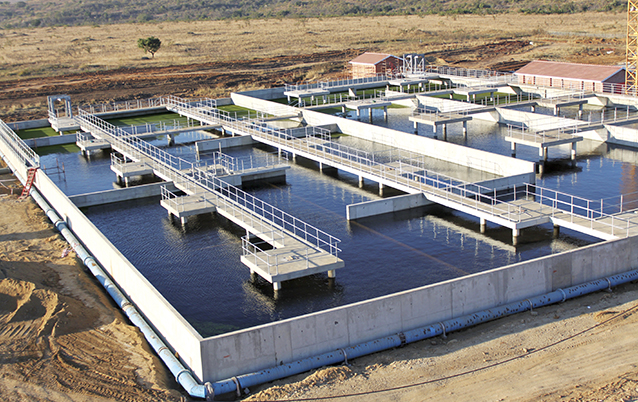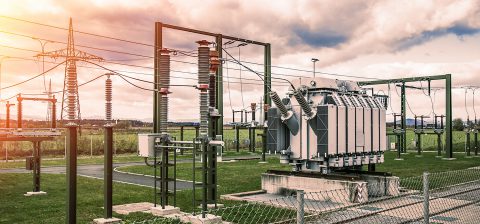Sunday Times Green
Are We Running Out?
With figures from the Department of Water and Environmental Affairs suggesting that demand for water in South Africa will outstrip supply by 2025, government, businesses and individuals must surely act now.
Figures revealed in a report issued by the 2030 Water Resources Group and international consulting firm McKinsey & Company suggest a steadily worsening supply-demand water deficit. By 2030 they predict that South Africa may be short of 2.7 billion cubic metres of required water.
Yet the impending water crisis extends far beyond our country’s borders. According to a recent University of Oxford report, water insecurity costs the global economy almost US$500 billion annually.
“Globally, water is an extremely fragile resource that’s increasingly under threat due to climate change, exploding populations and rapid urbanisation,” says Patrick Rosslee, a rainwater harvesting specialist at JoJo Tanks. What exacerbates this threat is the fact that water is a limited resource. Of all of the water on the planet, only 3% is fresh and only 1% of this is available to sustain life on earth. So, as the global population grows, the amount of usable water remains constant, necessitating greater care and ingenuity around maintaining supply.
While we share global challenges, the situation in South Africa may be worse, since we are classified as a water-stressed country. This is because we receive only 492mm of rainfall annually – almost half of the earth’s average rainfall, according to Water Wise, Rand Water’s environmental brand.
“Additionally, rainfall tends to be concentrated in certain areas and doesn’t fall consistently throughout the year,” says Rosslee. “Water is also stored in expensive dams that are, in most cases, remote from where the concentration of users is, resulting in expensive pipelines and high pumping costs.”
Pollution, water losses and varying weather patterns create added pressure, but the fact that water costs are relatively – and deceptively – low in the country also leads to wastage. “We believe South Africans could soon be facing a water crisis similar to the electricity crisis, and are hopeful that the pressure we’re experiencing on the energy front could be the fuel we need to explore and implement new water innovations,” says Rosslee.
Government response
According to Department of Water and Sanitation (DWS) media liaison officer, Sputnik Ratau, the department is committed to and accountable for ensuring that water issues don’t reach the severity of the electricity crisis. “We’re tackling problems ahead of time in support of the plans of government and the DWS,” he says.
However, Ratau does acknowledge the challenges the country faces. “If we don’t plan and think about conservation, there’s a realistic chance of reaching crisis levels,” he says, “but we’re aware that we cannot rest. As a department, our basic responsibility is to ensure the security of South Africa’s water supply and sanitation access.”
Ratau also speaks of the importance of keeping the nation informed of developments, and of ensuring the ongoing supply of basic services. “We have a plan, with the National Development Plan as our guiding principle,” he says. “The Minister of Water and Sanitation, Nomvula Mokonyane, is working towards this with what she calls a ‘war room’ – our water and sanitation think-tank. This doesn’t only involve the department; it’s a continuous process with a number of departments, institutions and private-sector partners.” Adds Ratau: “We’re looking at underground water sources, rivers, new dams, and at how existing infrastructure can be used to serve the people. We’re investigating desalination to harness the coastlines on both sides of the country. We’re also examining shared water costs and resources with neighbouring countries like Lesotho, Botswana and Zimbabwe, and how we can use these resources for all of our benefit.”
The department, stresses Ratau, has a huge responsibility in providing all South Africans with access to water and ensuring the infrastructure to do so. “We’re tackling the issue of informal settlements and encouraging people to move to more formalised areas.”
Water quality
South Africa is known for having some of the best-quality drinking water in the world. Yet, with rising levels of pollution, insufficient infrastructure and skills shortages, is this under threat?
According to the National Water Resources Strategy 2013, there are significant water-quality challenges, including those posed by mining, urban development, industries and agriculture. Untreated or poorly treated wastewater is severely affecting the quality of water in many areas. “Government’s made significant strides in monitoring water quality through initiatives such as the Blue Drop monitoring system, though,” says Rosslee.
According to the Blue Drop Report, adds Ratau, South Africa’s drinking water is still of a high quality. “Municipalities annually participate in a certification process which looks at quality from all areas. We’re able to quickly identify where there are difficulties, assisting struggling municipalities to improve delivery.”
While smaller municipalities don’t consistently meet standards, drinking water in larger municipalities continues to flourish. A 2015 Euromonitor report on bottled water in South Africa suggests that tap water remains a worthy adversary. “The expansion of the bottled water category in South Africa remains highly restricted due to the availability of clean tap water,” states Euromonitor.
In terms of sewage, wastewater treatment is of concern, admits Ratau. “Operations and maintenance are primary concerns and must work optimally, otherwise we run the risk of unhealthy water. Municipalities lack money and the capacity necessary to always maintain standards.”
Education is key, he continues. The DWS Learning Academy, set up in 2007, works together with schools and universities to attract students to careers in the water and sanitation field. “We’re looking to bring new experts into the field and make students aware of opportunities. There’s also an exchange programme with Cuban scientists to assist us in areas where our skilled people don’t want to go, especially in rural locations. We want to make use of existing capacity and look for new solutions.”
Companies take action
Water conservation in the private sector that supports government efforts is essential, says Ratau. Indeed, numerous manufacturing plants, mining companies and corporations are committed to creating water security.
For leading South African brewer and beer and soft drink distributor, South African Breweries (SAB), water security is a cornerstone of its sustainable development strategy. As part of this strategy, it aims to create a “resilient world” to secure shared water resources for the business and local communities, through corporate social investment water projects and participation in the Strategic Water Partners Network (SWPN), a unique public and private-sector effort rooted in projects to reduce the water volume supply-demand gap by 2030.
“SAB also aims to reduce its water use to 2.89 per litre of beer by 2020 within our manufacturing process, and implement programmes to mitigate shared water risks for our key crops such as hops and barley,” states a recent SAB media release.
Projects in this regard have already been successfully implemented, with the growing Precision Irrigation of Barley project already saving 48% of water in its first year of operation. “The Precision Irrigation of Barley project, a world-first, aims to reduce the irrigation water usage per crop with precision scheduling, significantly lowering our total water footprint in producing one litre of beer. We’re currently expanding our barley production, meaning the impact in saving water will increase three times,” says SAB agriculturalist Frikkie Lubbe.
Individual effort
The man in the street can also play a part in water conservation.
“It’s more economical to reduce water use by changing habits,” says Patrick Rosslee, a rainwater harvesting specialist at JoJo Tanks. “That’s why rainwater harvesting must be part of the greater solution, as it instils responsibility and empowers people with some control over their water supply. Rainwater harvesting tanks capture rain, your free source of water right where you’re using it. Harvested rain can be used for almost all household water needs, from watering the garden to doing the laundry and flushing toilets.”
While some municipalities have made rainwater harvesting compulsory, there are currently no legislative requirements to enforce it, says Rosslee. “Government has, however, started drafting national guidelines for rainwater harvesting for urban and rural settings. Real change will come if it’s made compulsory and rebates are offered for installation.”
Rosslee suggests other ways to conserve water in your home:
- Tap aerators should replace all taps that run around 15 litres of water per minute, as they could reduce the flow rate to as little as 6 litres per minute.
- By reducing the average length of a shower by two minutes, a family of four can save up to 60 000 litres of water in a year.
- Toilets are the main source of water use in the home, accounting for nearly 30% of residential indoor water consumption, so investigate high-efficiency toilet options, including dual-flush technology.
- Plastic bottles filled with water (and carefully placed inside the cistern) and the so-called toilet dam (a barrier placed inside the cistern, creating a dry compartment) can serve a similar purpose, saving up to 3 litres of water per flush.
- In the garden, drip irrigation systems should be prioritised over above-ground sprinkler systems, to minimise evaporation.
- All irrigation systems should have a rain sensor attached, to prevent watering during rain showers. Integrated weather monitoring systems can reduce irrigation usage by up to 30%.






 Sign-up and receive the Business Media MAGS newsletter OR SA Mining newsletter straight to your inbox.
Sign-up and receive the Business Media MAGS newsletter OR SA Mining newsletter straight to your inbox.